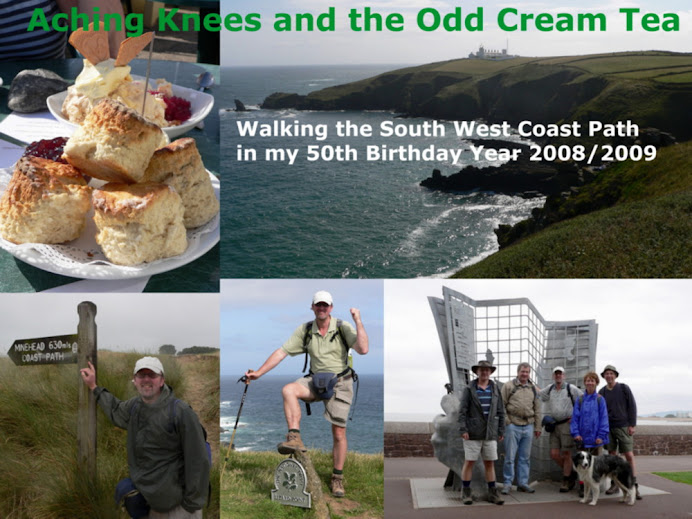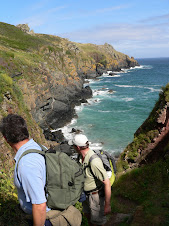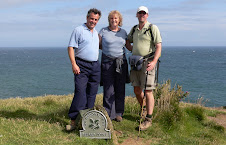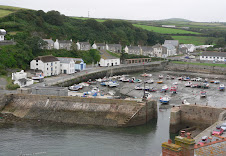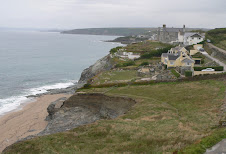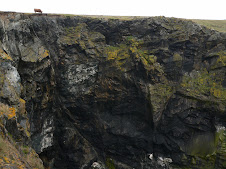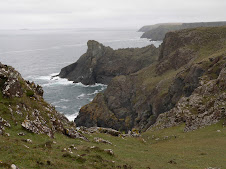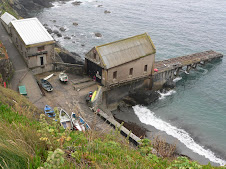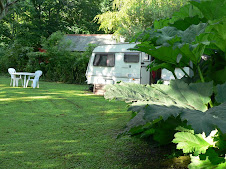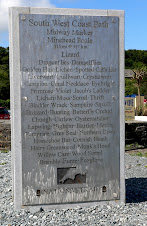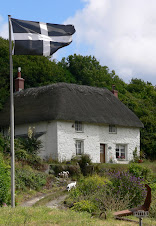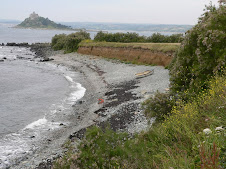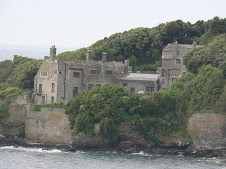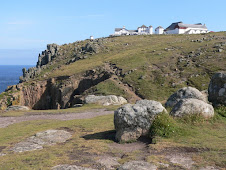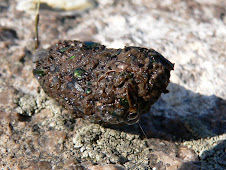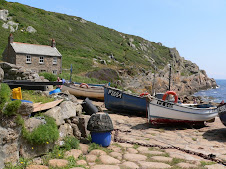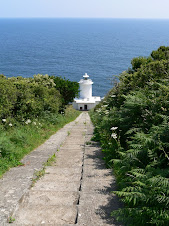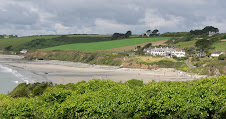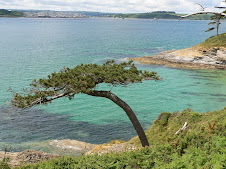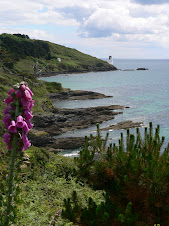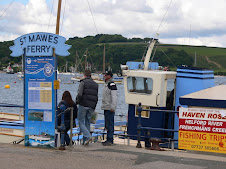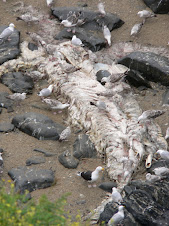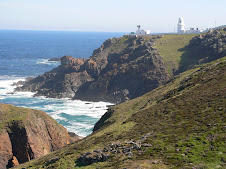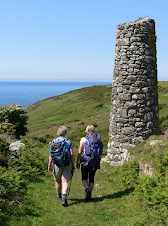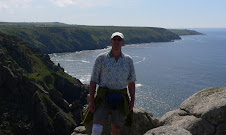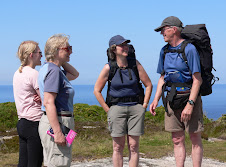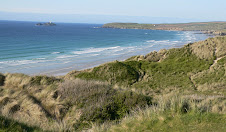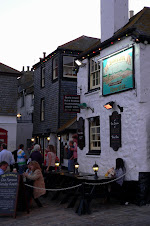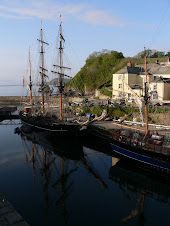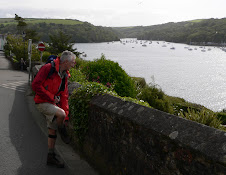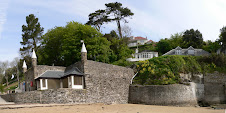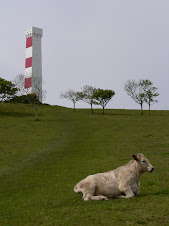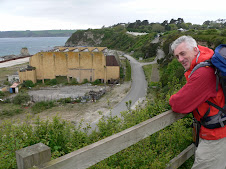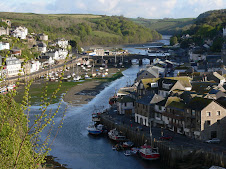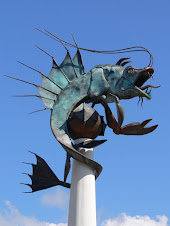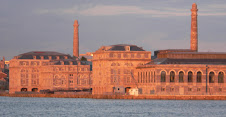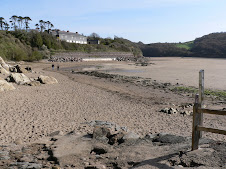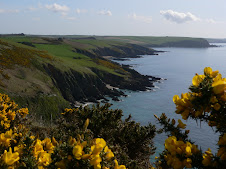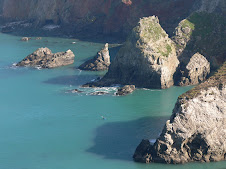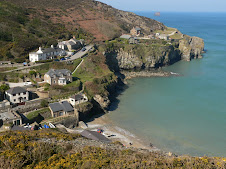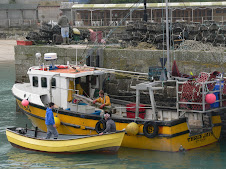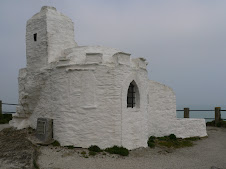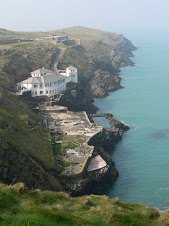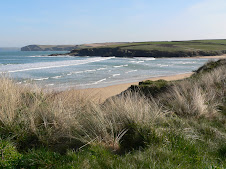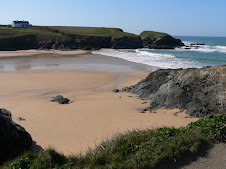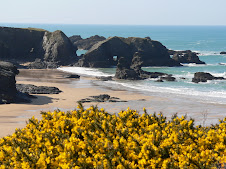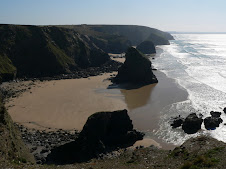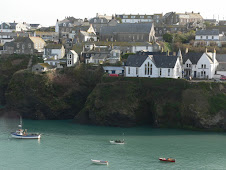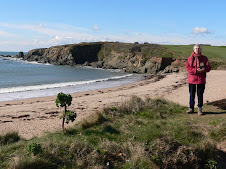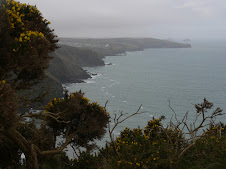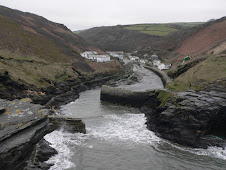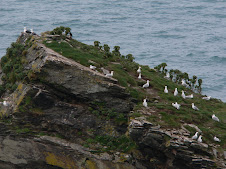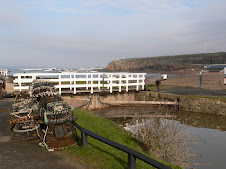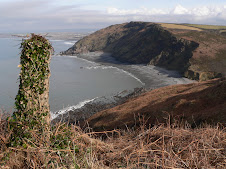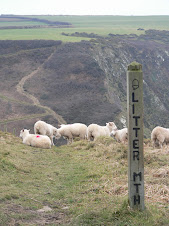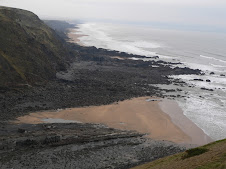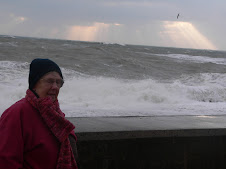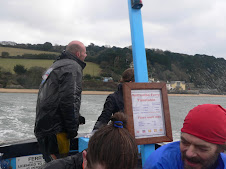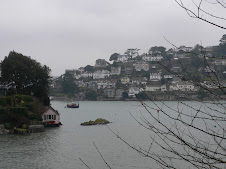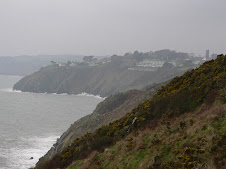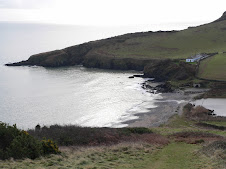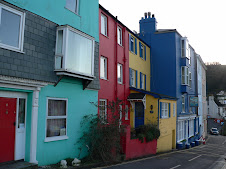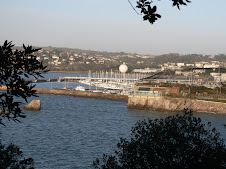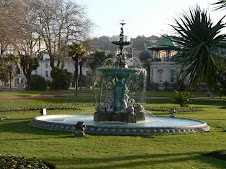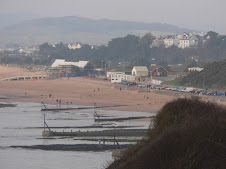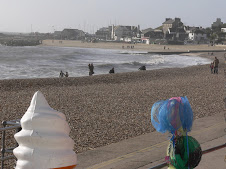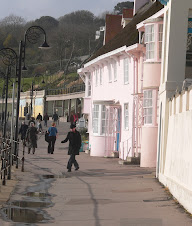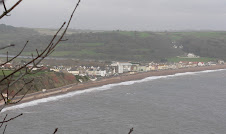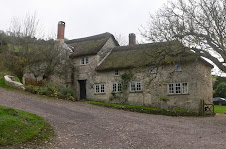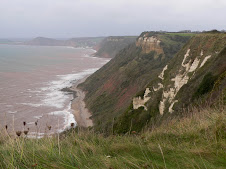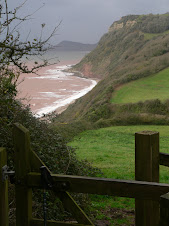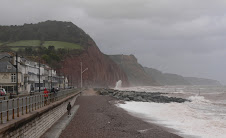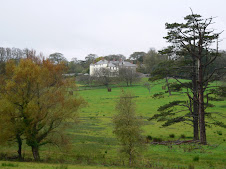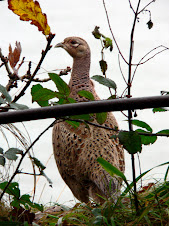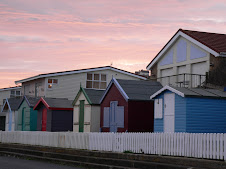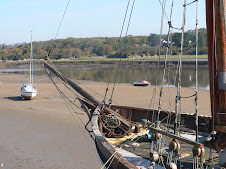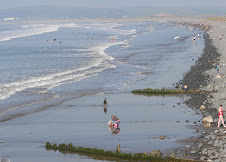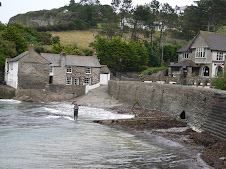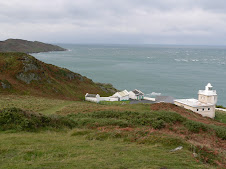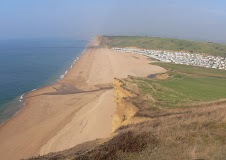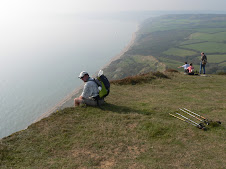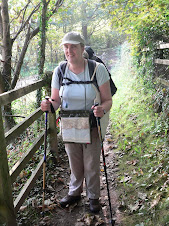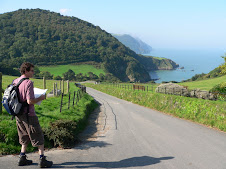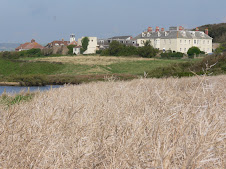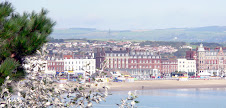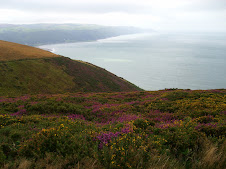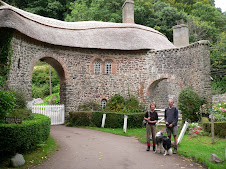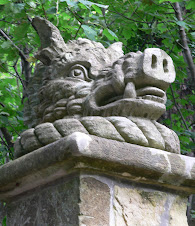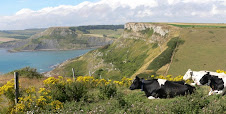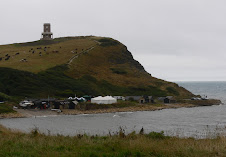It was a very grey and damp day and once I was back on the path - there was a fine misty rain coming in from the sea. This made the path very slippy - especially as alot of it was slate - with the famous Delabole quarry, just a few miles inland. Many of the Port's along this stretch of coast had a history of exporting Slate and apart from the main quarry at Delablole - there were numerous other smaller ones dotted about. Many of the stiles were made from Slate - and also, the steps had slate divides, which as I found out very early, were extremely slippery. I had only been walking 15 minutes before I was floundering in the undergrowth legs akimbo!
The path led up from the Castle entrance to the cliff path, passing an old Church , the oldest still in use, in Cornwall and also a Youth Hostel with a superb location on the clifftop - formerly a Quarry office.
 The first point of interest was Trebarwith Strand, and along the way - there were several disused coastal quarries - with one having left a large pillar of rock standing at Slate Hole.
The first point of interest was Trebarwith Strand, and along the way - there were several disused coastal quarries - with one having left a large pillar of rock standing at Slate Hole.The climb down into Trebarwith was very steep, as was the climb out! It looked very scenic and was used for loading slate boats.
Apparently, at the height of the Slate industry - over 1000 men were employed in the various quarries in and around Delabole. Once up on Start Point, through the mist, you could just make out Port Isaac in the far distance. The path along this section included the valley of 'the Mountain' but this wasn't as daunting as it sounded. There is a large beach - Tregardock and a series of interesting rocky points and coves dominated by sheer black cliffs.
Before Port Isaac was the smaller Port Gaverne, which has an interesting history revolved around the slate industry. In days gone by, there was a pier and at loading times - up to 100 horses and many of the villagers would be used to load the brittle cargo.
The path follows the road out of Port Gaverne and soon descends into Port Isaac. Before reaching the small beach and harbour area - it passed the high level car park - so I made sure that the car was still there and I hadn't got a ticket! - before dropping down into the narrow lanes and alleys around the harbour where there is another car park on the beach - definitely short stay!
There were a few visitors about and some of the businesses were open - so I fuelled up with a welcome Cappuccino before heading back to Uffculme. It had been a good weekends' walk - interesting scenery and another 21 miles knocked off the total!
